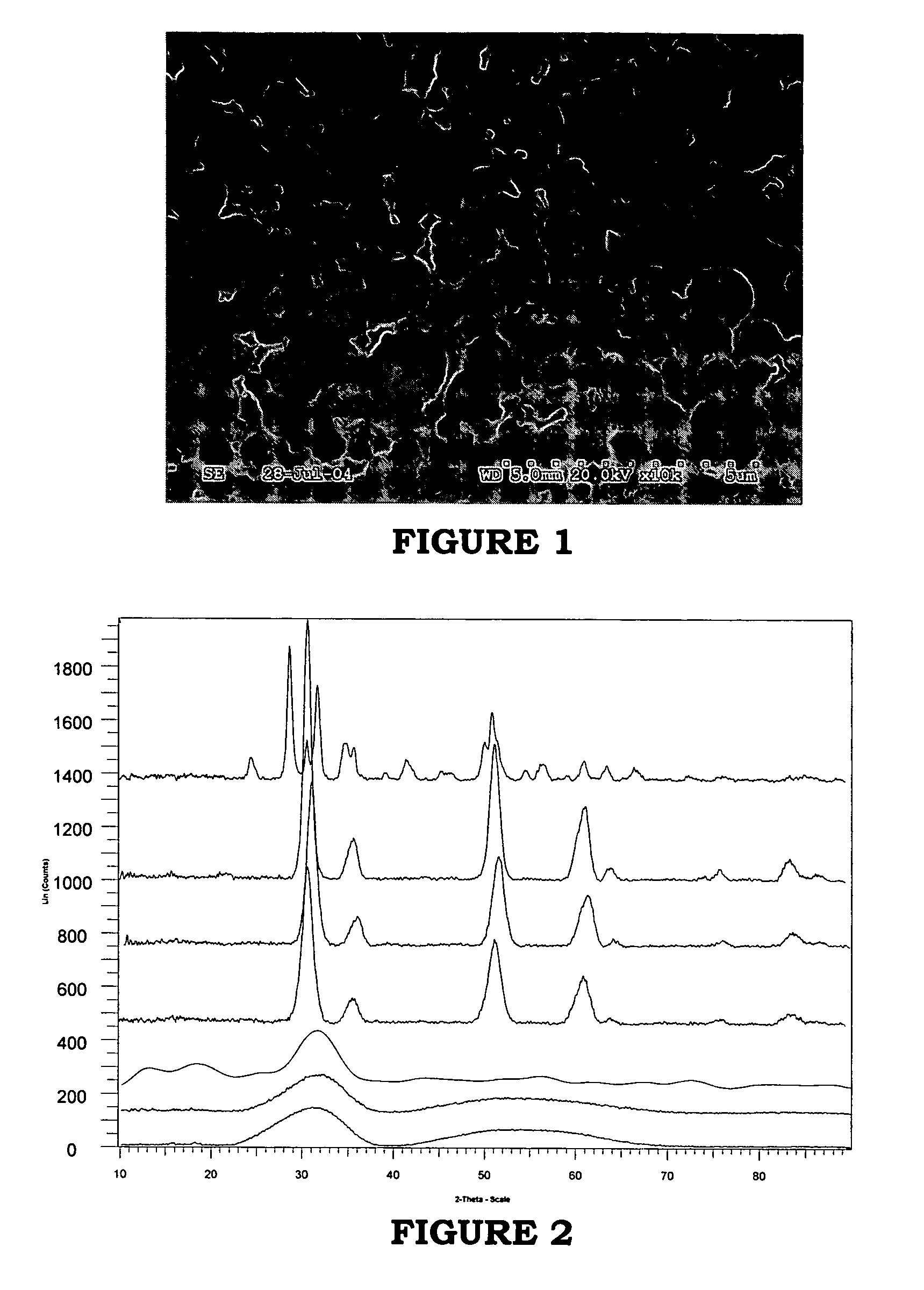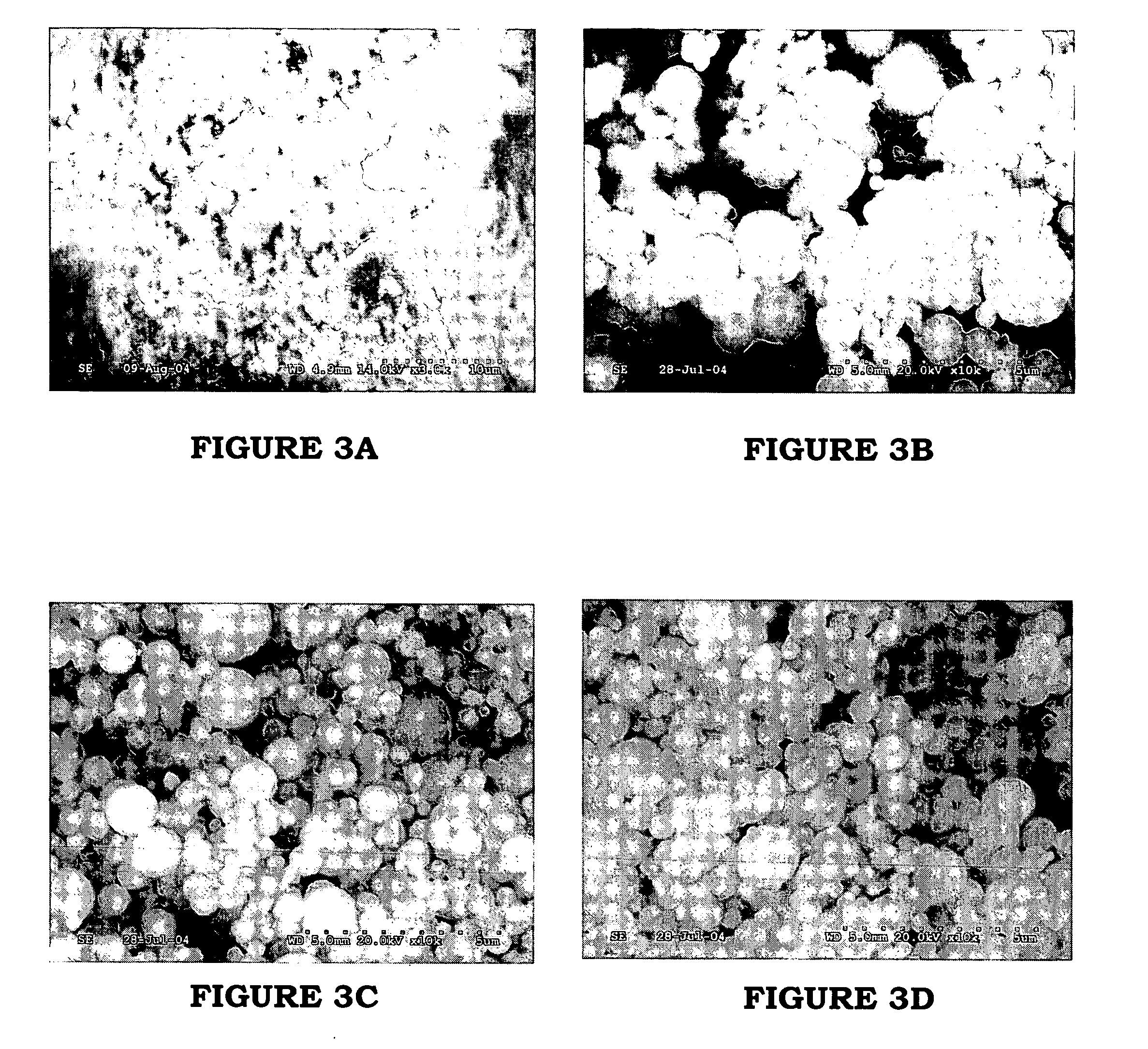High surface area tetragonal zirconia and processes for synthesizing same
a technology of tetragonal zirconia and high surface area, which is applied in the direction of zirconium oxides, chemistry apparatuses and processes, and oxygen/ozone/oxide/hydroxide, etc., can solve the problems of fuel cells, lack of efficient wgs catalysts, and catalysts with slow kinetics
- Summary
- Abstract
- Description
- Claims
- Application Information
AI Technical Summary
Benefits of technology
Problems solved by technology
Method used
Image
Examples
example 1 (
1. Example 1 (Synthesis of a—ZrO2)
[0136] This example illustrates the production of a 20g batch of a high surface area amorphous zirconia (ZrO2) composition by precipitation of a zirconyl nitrate zirconium precursor with ammonium hydroxide followed by the digestion of zirconia hydroxide. 55 g of zirconyl nitrate (ZrO(NO3)2) was dissolved in 454 ml deionized water to obtain solution A. Solution B was prepared by mixing 100 ml deionized water and 100 ml 30 wt % ammonium hydroxide (NH4OH). Solution A was added dropwise into Solution B under vigorous stirring at room temperature to form a first precipitant. The pH was continuously monitored with a pH meter and found to decrease from 12 initially to about 9.8 at the end of precipitation. Solution C containing the above first precipitant, zirconia hydroxide, was then digested at a constant temperature of 96° C. for 192 hours to form high surface area amorphous zirconia. Additional 30 wt % NH4OH was added throughout digestion at a rate of ...
PUM
 Login to View More
Login to View More Abstract
Description
Claims
Application Information
 Login to View More
Login to View More - R&D
- Intellectual Property
- Life Sciences
- Materials
- Tech Scout
- Unparalleled Data Quality
- Higher Quality Content
- 60% Fewer Hallucinations
Browse by: Latest US Patents, China's latest patents, Technical Efficacy Thesaurus, Application Domain, Technology Topic, Popular Technical Reports.
© 2025 PatSnap. All rights reserved.Legal|Privacy policy|Modern Slavery Act Transparency Statement|Sitemap|About US| Contact US: help@patsnap.com



